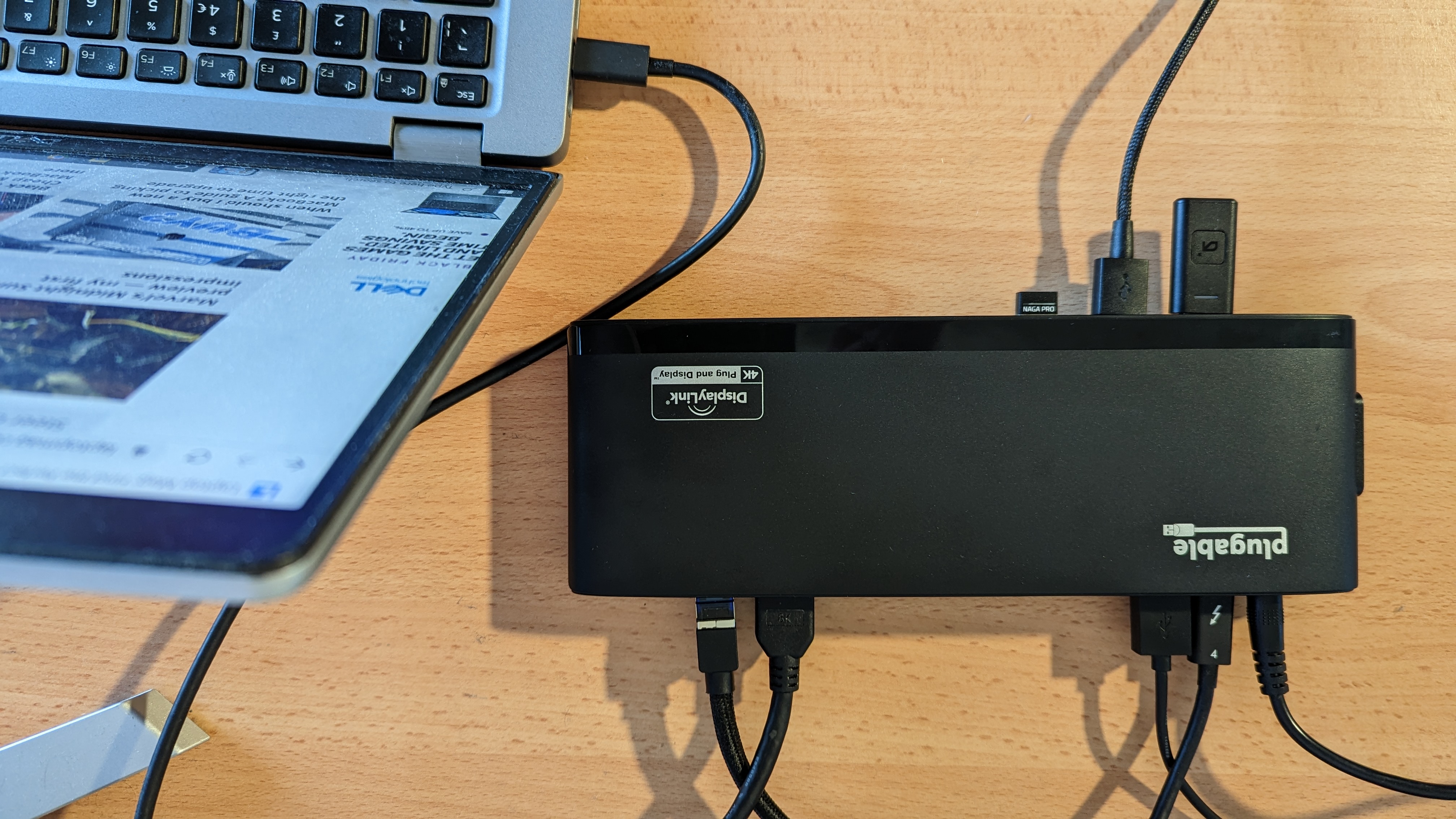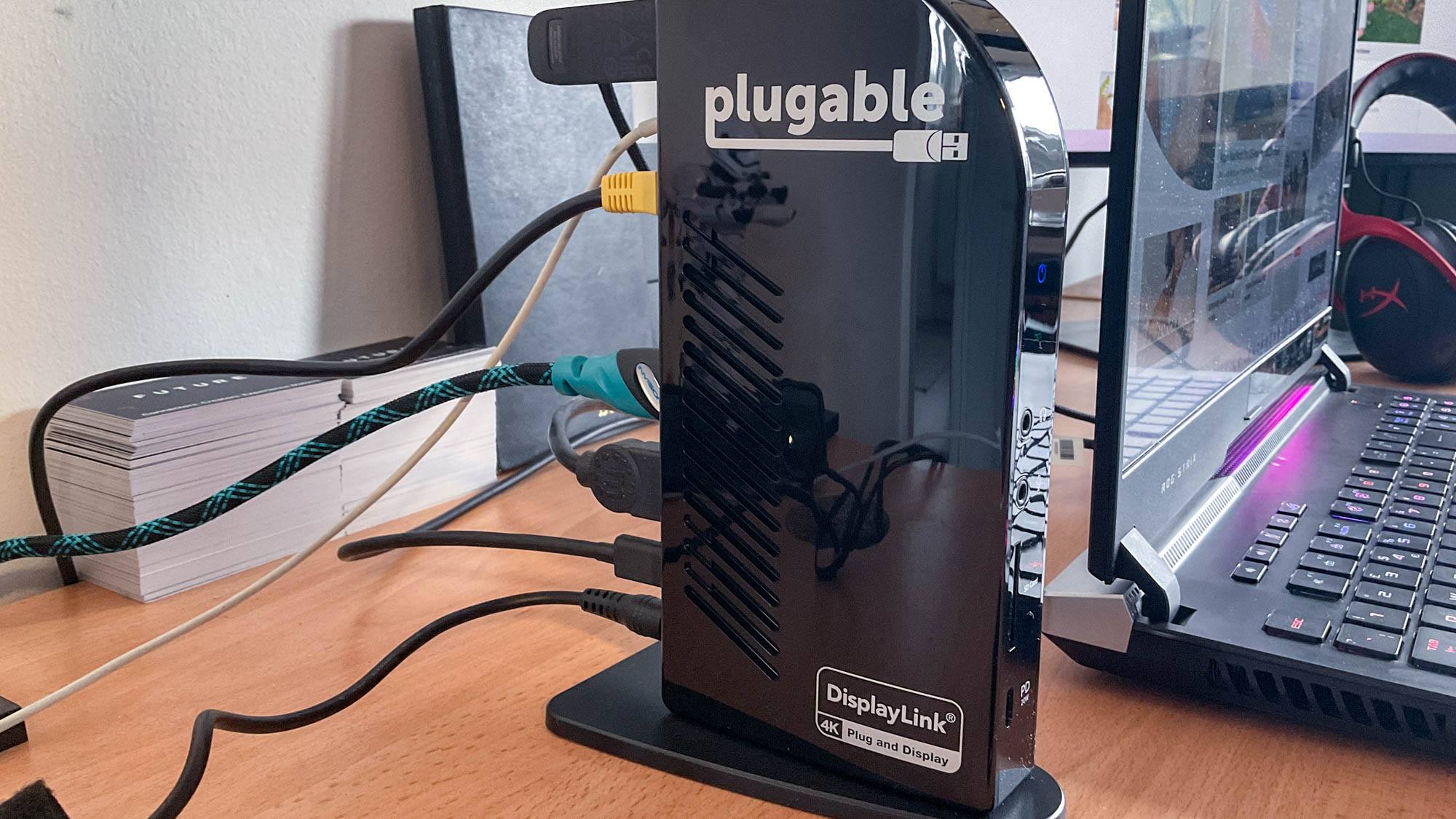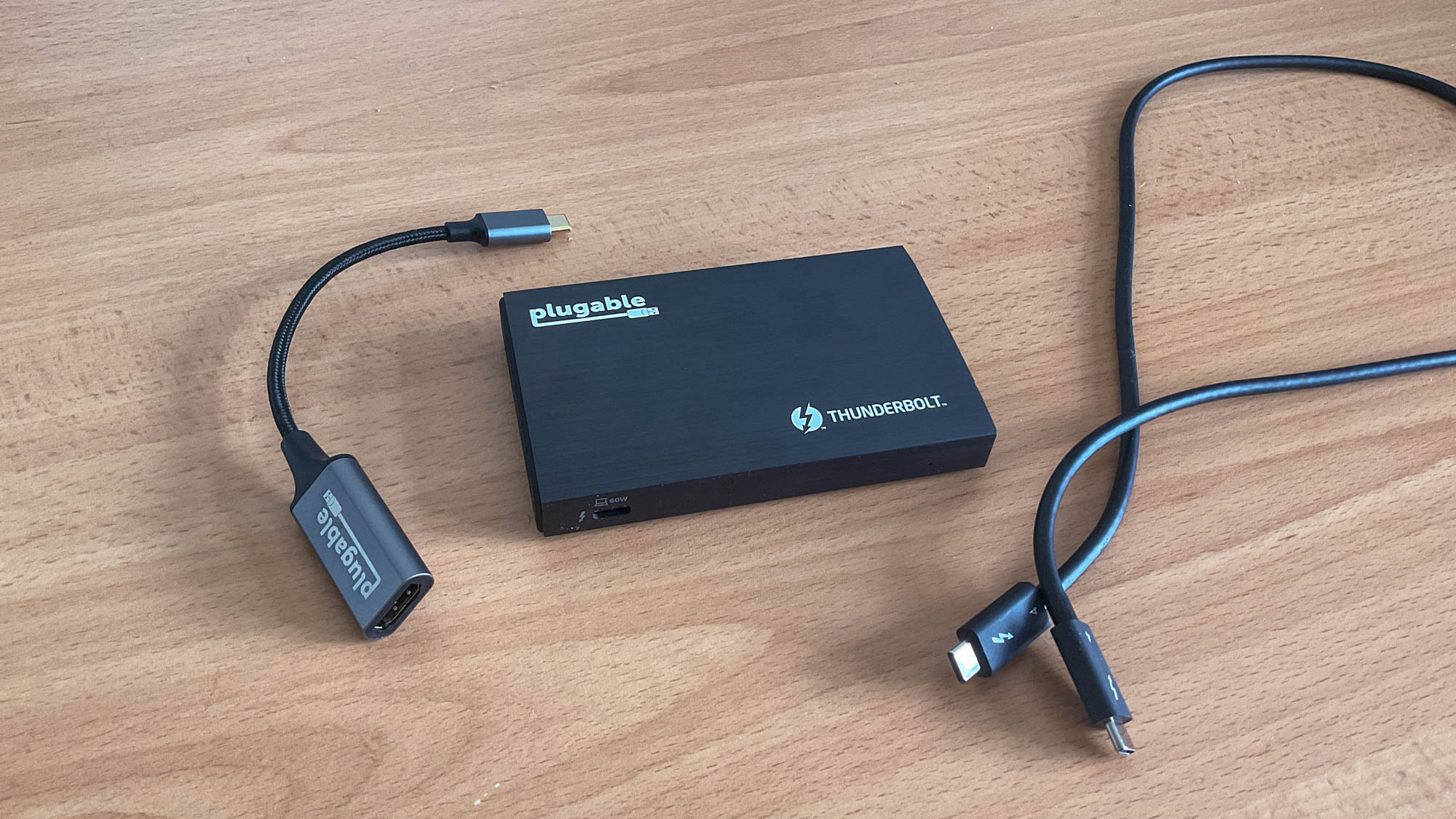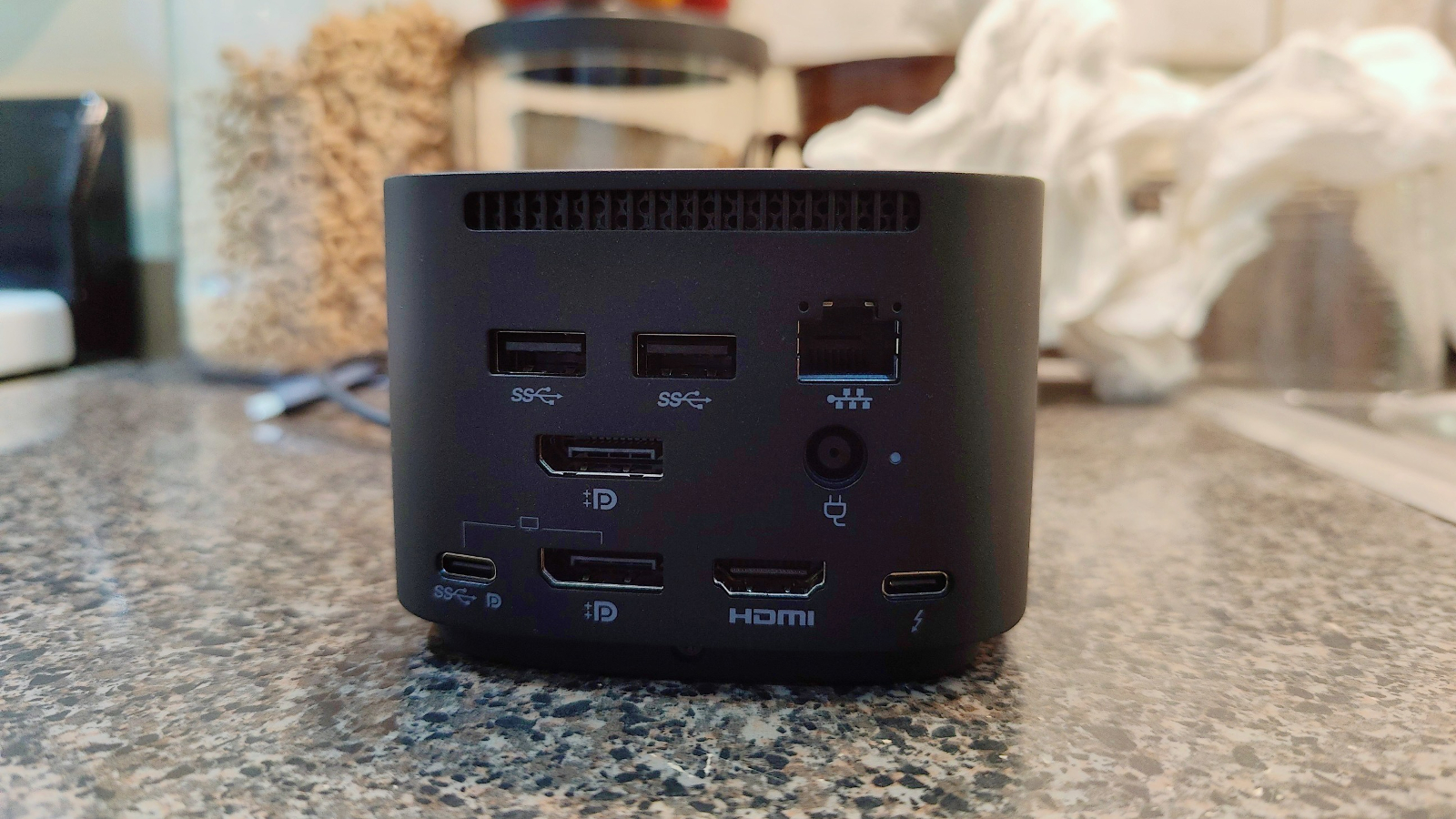Docking stations are the secret weapons of the tech industry. To paraphrase The Avengers, Loki “desktop” Odinson may claim “I have an army of ports,” but Tony “laptop” Stark retorts “we have a docking station.”
As laptops like the MacBook Air and Dell XPS 13 get smaller, the number of ports on them diminish, too. However, all of that changes when you bring a docking station into the mix; it provides a surplus of ports to expand your notebook’s connectivity. From connecting keyboards and mice to hooking up an external monitor and harnessing the might of Thunderbolt 4, if “Hulk Smash!”, then “Docking Station Connect!”
But a dock is just a box with ports stuck in it, right? So, how in the world can the best docking stations cost around $300? With that in mind, of course Iron Man would back docking stations in this Marvel-esque, metaphorical landscape — he’s a billionaire, after all.
Even after reviewing my fair share of docking stations and USB-C hubs, it’s a question I’ve had a difficult time figuring out. To shine a light on this query, I decided to reach out to Plugable Founder and CTO, Bernie Thompson. If you want, you can think of him as the all-knowing Nick Fury of this bizarre MCU correlation. But to stick with reality, here’s why docking stations are so damn expensive.
The answer
Plugable, a company known for its vast array of quality USB devices, is no stranger to docking stations. In fact, quite the opposite; Plugable consistently delivers some of the best docking stations and USB-C hubs on the market, especially for their prices. One of the best around, the Plugable USB-C Triple 4K Display Docking Station has a shocking listing price of $394.99, but you’ll almost always see it discounted down to $279. And that’s a competitive price.
Thompson gave a rundown of what docking stations deliver and the culprits behind their sky-high prices:
“Docking stations have grown in importance as computers have gotten thinner and lighter. Many laptops now often have only one or two USB-C ports to connect everything. Consumers want to connect keyboards, mice, monitors, projectors, headsets, webcams, hard drives, printers, and more. It’s the dock that provides the extra ‘legacy’ ports to connect all that stuff.”
“That’s also made docks more complex and expensive, usually costing $100 to $200 or more. They can have as many chips inside as the laptop they’re connecting to. They often come with bigger power adapters than the laptop itself. The value of ‘one device to connect them all’ is high, and so is the complexity.”
Sure, a dock may not have a display, keyboard, trackpad, or any viable use without connecting it to another device, but it’s what’s powering it that bumps up the price. The (usually) included power adapter is a big factor, as Thompson points out that they can exceed the size of the brick (therefore, the wattage) of a laptop’s power brick.

Docking stations need that power, as not only are they delivering power to the laptop itself via Power Delivery, but they can also power any other devices that are connected to it. That’s only the tip of the iceberg, though, as there are a few more reasons why the price tag can be high.
The breakdown
Thompson broke down the reasons for a docking station’s complexity contributing to a higher price, expanding on two specific aspects: power and monitor connectivity options. While I’ve seen docking stations bring the heat by offering 100W Power Delivery, I was intrigued by what they will eventually deliver: 240W PD.
“USB has become an amazingly flexible technology to power or charge devices, even the laptop itself. Every port on a docking station requires power: USB 3.0 ports up to 4.5W, Standard USB-C ports up to 15W, USB-C ports with Power Delivery up to 100W today, and 240W in the future.”

Thompson continues: “Where USB accommodates sharing power, new regulatory requirements like IEC 62368-1 require large power adapters based on maximum draw. That’s why you read comments like this from the New York Times: “Like all Thunderbolt docks, this comes with a huge power brick.” Or from Engadget: “One thing to keep in mind with this dock is the huge power brick: It’s almost exactly the same size as the dock itself.” This is caused by the combination of USB’s flexible power capabilities plus regulatory inflexibility.”
Then there’s the display side of things. Having a second monitor is near-essential if you manage a busy workflow, but not all laptops have the right type of output that can conveniently connect to a display. Docking stations will have HDMI, DisplayPort, or USB-C to fix that, but sometimes, even that’s not enough. Thompson elaborates on the demand for variety.
“USB has also become the way to connect extra displays and projectors. But the industry hasn’t settled on one standard. HDMI and DisplayPort are still battling to win the defacto standards battle, with USB native connections on the monitor and legacy connections like VGA and DVI still widely used.”
He continues: “Consumers want a dock that will solve this lack of standardization and confusion. The most popular, like the Plugable 4K Ultimate Dock, at least support either HDMI or DisplayPort for each of the three outputs on the dock. These extra connectors and extra video conversion ICs inside the dock are complex and expensive.”

With that being the case, this points to why laptops, like Ultrabooks and MacBooks, don’t include this variety of connectivity. They may have a couple of legacy ports, but the more that’s packed in there, the more complex and expensive the notebook gets. We already know how expensive some of the best laptops get, so adding even more ports would make their sticker price a lot less attractive. To mitigate that expense, docking stations take on the brunt of the price of connectivity instead.
The alternatives
Because of the lack of ports in certain laptops, manufacturers will develop their own docks that are made for its devices. This includes Dell and HP, which do a good job of bringing the slots, power, and monitor connectivity their laptops need. But Thompson talks about why a third-party dock, like the ones from Plugable, might be preferable over an original equipment manufacturer (OEM) branded dock “that was presumably made and tested for that specific laptop.”
He states: “The answer is broader compatibility and the testing for that broader compatibility conducted by Plugable. Third party or aftermarket brands have to focus on true universality across OEM brands and not just Mac vs. Windows. This multi-brand operating system better reflects most office and business environments. A more universal dock will allow greater flexibility to be used in a multi-laptop/generation household or office.”

That’s not to say OEMs like Dell and HP don’t make great docking stations, but they can also be quite pricey. For example, HP’s Thunderbolt Dock 120W G4 (opens in new tab) is $329, and if you’re thinking of getting a new laptop that isn’t HP, it may not work as well with it.
“As laptops have shrunk and reduced their port choices, docks have become an important accessory to get all that connectivity back,” Thompson concludes. “Docks have become more expensive but also more essential.”
So there you have it, true believers (okay, I’m done with the Marvel lingo). Docking stations are pricey because delivering the number of ports, along with the variety of connectivity options and power adapters they come with, is no small feat. In a way, it offsets the price of our favourite laptops, even if we wish there was an extra port or two on them. Still, that’s why there are docking stations, and if you’re looking for the best docking stations around, we’ve got you covered. However, if you’re only looking for an extra handful of ports for under $100, you might want to check out the best USB-C hubs instead.








